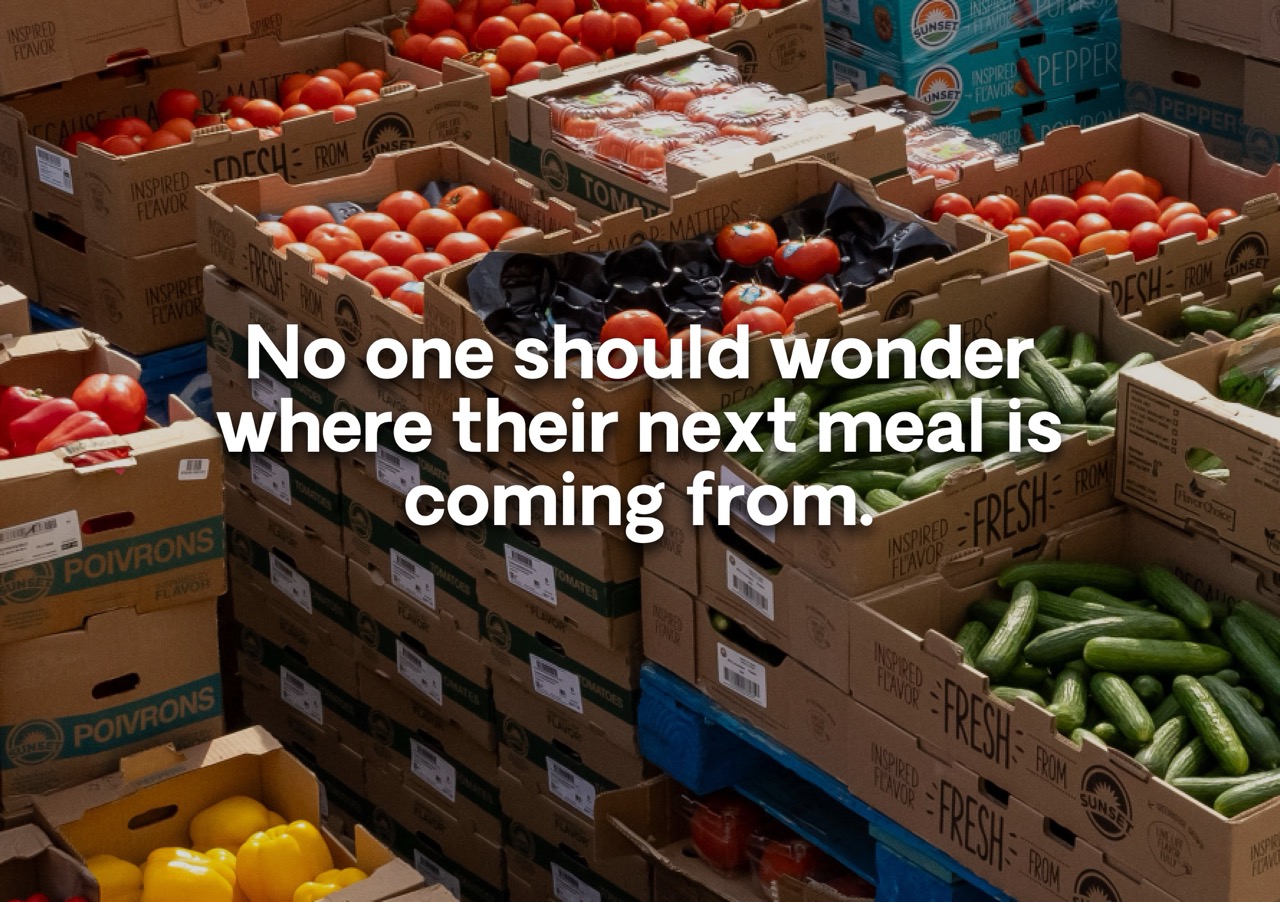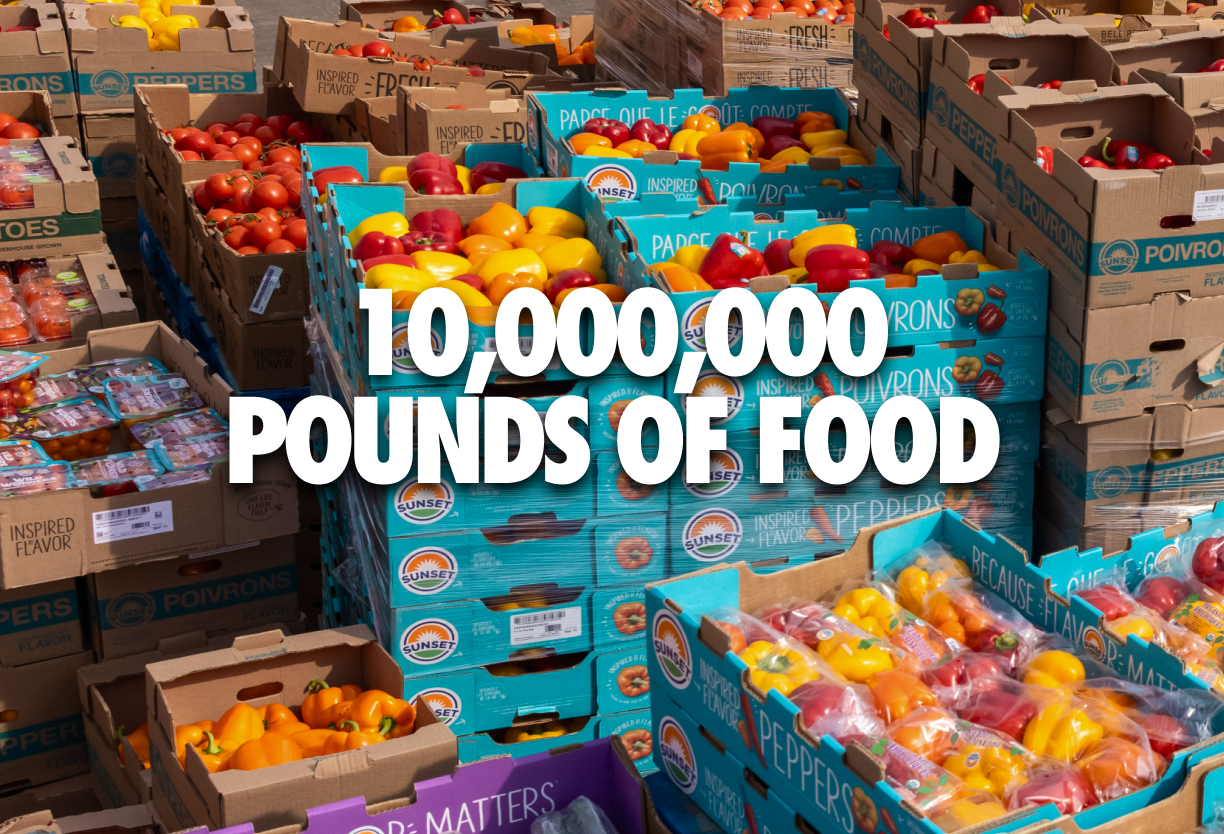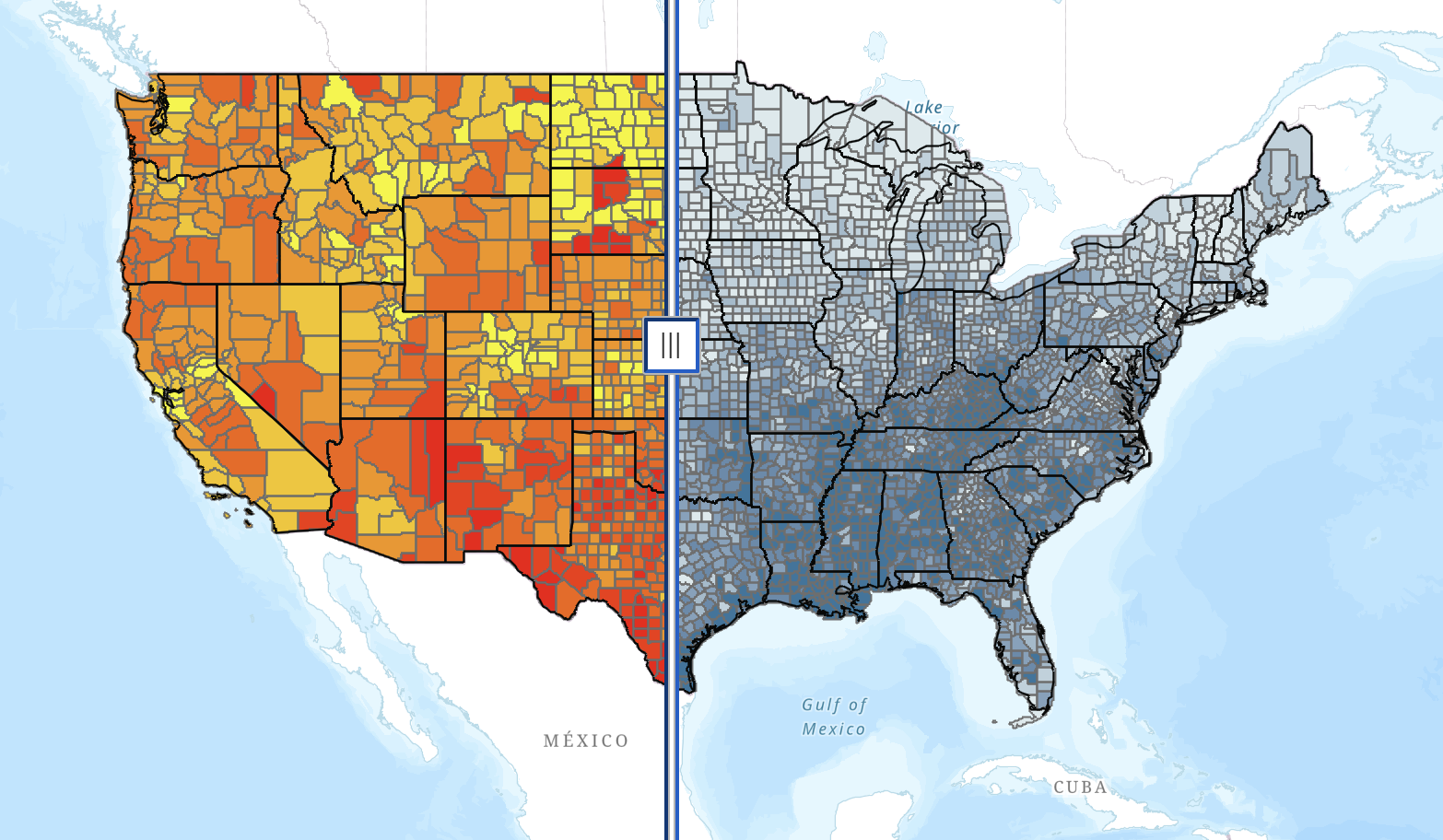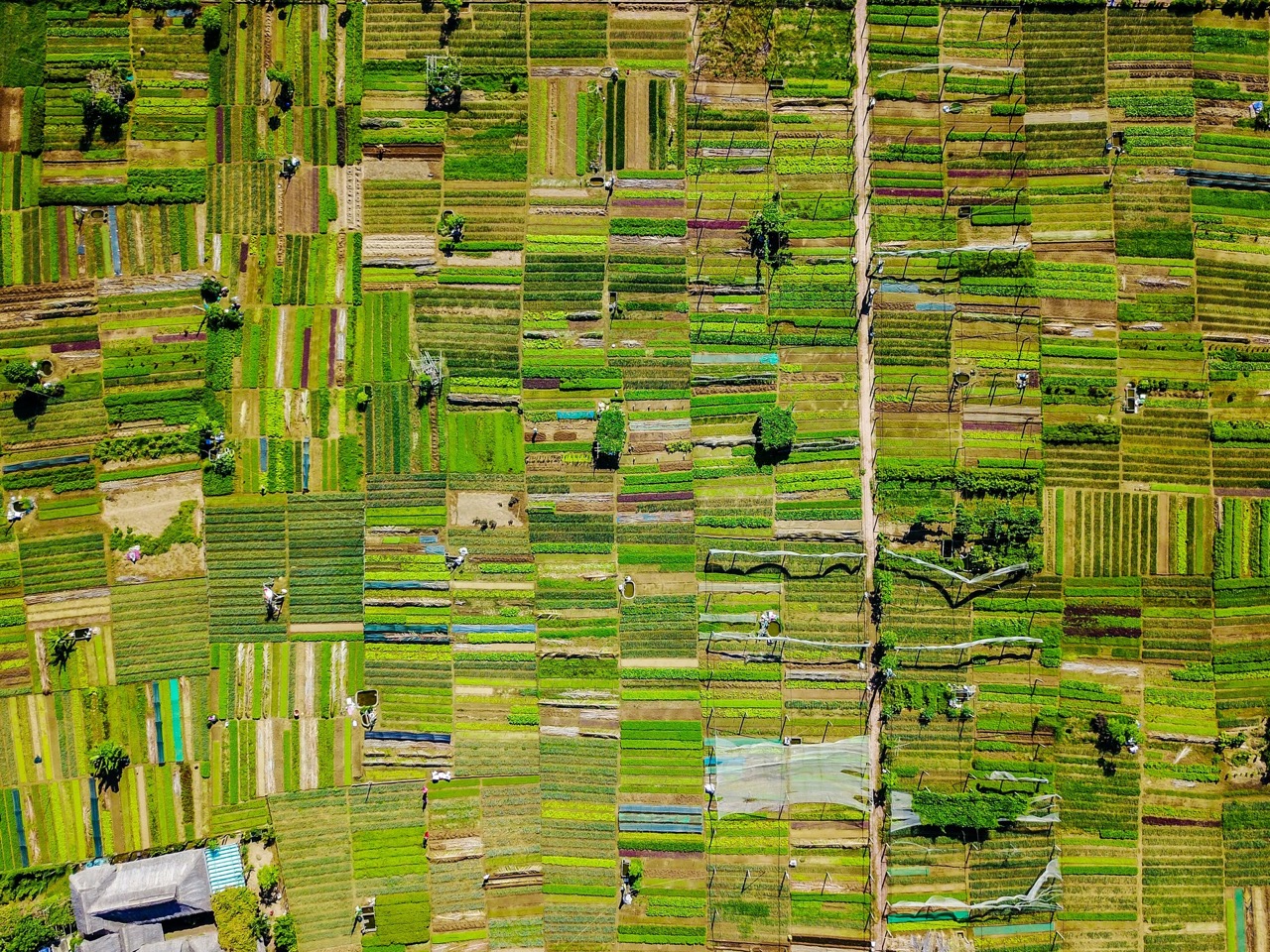“Sustainability” is a buzzword with a variety of meanings. When it comes to sustainable agriculture, the definition seems simple: provide nutritious food for human consumption while utilizing farming practices that preserve natural resources and protect the environment. The UN projects that the global population will reach about ten million by 2050, so it is becoming increasingly important to moderate the consumption of our resources to ensure that the earth can support the growing population for years to come.

In 2019, agriculture accounted for 10% of the United State’s total greenhouse gas emissions. Additionally, deforestation, which often occurs to clear space for livestock grazing and farming, was responsible for another 10% of total greenhouse gas emissions.
In the last century, the number of farms in the United States has decreased dramatically and the average size of farms has increased, a product of the agriculture industry’s shift towards large-scale factory farms. This diminished the number of family-owned farms as large corporations began to produce the majority of food in America. This shift towards large-scale agriculture has had a myriad of negative effects, such as topsoil depletion, groundwater contamination, degradation of rural communities, harmful conditions for farmworkers, and increased production costs. Sustainable agricultural practices seek to address these issues, ultimately improving both labor conditions for farmworkers and farming’s impact on the environment.
Sustainable agriculture is a dynamic practice that encompasses technology and farming methods to preserve natural resources and ensure their viability for years to come. Some commonly used sustainable agriculture practices include:
- Increased crop diversity: This allows farmers to profit from high yields of multiple crops year round, limit reliance on chemical pesticides, and enhance soil fertility.
- Planting cover crops: Cover crops are planted to protect soil from erosion and provide it with nutrients between growing seasons. They can also be used for livestock grazing, and are effective in limiting pesticide runoff and adding organic matter to soil.
- Hydroponics and aquaponics: These farming practices grow crops without soil so that they can be grown inside or outside in areas with limited space.
- Use of renewable energy sources: Harnessing energy sources like solar, hydroelectric, or wind limits dependence on nonrenewable energy.
- No-till farming: Tilling turns over the top layer of soil before planting new crops, which erodes the soil and kills microbes essential for soil health. No-till farming maintains soil structure and quality for multiple growing seasons.
These are just a few examples of the many sustainable agriculture practices that farmers are implementing around the world to preserve our natural resources and provide nutritious food for the global population. About two million people on Earth are currently experiencing moderate to severe levels of food insecurity, and if current agricultural practices do not shift towards sustainable farming, this number will only increase with the growing population. Sustainable agriculture will allow the planet to thrive while simultaneously supplying healthy food for humans.
To learn more about a farm using sustainable practices, check out our Faces of Farmlink profile on Pierre Sleiman Jr., founder and CEO of GoGreen Agriculture.
< Back
“Sustainability” is a buzzword with a variety of meanings. When it comes to sustainable agriculture, the definition seems simple: provide nutritious food for human consumption while utilizing farming practices that preserve natural resources and protect the environment. The UN projects that the global population will reach about ten million by 2050, so it is becoming increasingly important to moderate the consumption of our resources to ensure that the earth can support the growing population for years to come.

In 2019, agriculture accounted for 10% of the United State’s total greenhouse gas emissions. Additionally, deforestation, which often occurs to clear space for livestock grazing and farming, was responsible for another 10% of total greenhouse gas emissions.
In the last century, the number of farms in the United States has decreased dramatically and the average size of farms has increased, a product of the agriculture industry’s shift towards large-scale factory farms. This diminished the number of family-owned farms as large corporations began to produce the majority of food in America. This shift towards large-scale agriculture has had a myriad of negative effects, such as topsoil depletion, groundwater contamination, degradation of rural communities, harmful conditions for farmworkers, and increased production costs. Sustainable agricultural practices seek to address these issues, ultimately improving both labor conditions for farmworkers and farming’s impact on the environment.
Sustainable agriculture is a dynamic practice that encompasses technology and farming methods to preserve natural resources and ensure their viability for years to come. Some commonly used sustainable agriculture practices include:
- Increased crop diversity: This allows farmers to profit from high yields of multiple crops year round, limit reliance on chemical pesticides, and enhance soil fertility.
- Planting cover crops: Cover crops are planted to protect soil from erosion and provide it with nutrients between growing seasons. They can also be used for livestock grazing, and are effective in limiting pesticide runoff and adding organic matter to soil.
- Hydroponics and aquaponics: These farming practices grow crops without soil so that they can be grown inside or outside in areas with limited space.
- Use of renewable energy sources: Harnessing energy sources like solar, hydroelectric, or wind limits dependence on nonrenewable energy.
- No-till farming: Tilling turns over the top layer of soil before planting new crops, which erodes the soil and kills microbes essential for soil health. No-till farming maintains soil structure and quality for multiple growing seasons.
These are just a few examples of the many sustainable agriculture practices that farmers are implementing around the world to preserve our natural resources and provide nutritious food for the global population. About two million people on Earth are currently experiencing moderate to severe levels of food insecurity, and if current agricultural practices do not shift towards sustainable farming, this number will only increase with the growing population. Sustainable agriculture will allow the planet to thrive while simultaneously supplying healthy food for humans.
To learn more about a farm using sustainable practices, check out our Faces of Farmlink profile on Pierre Sleiman Jr., founder and CEO of GoGreen Agriculture.
Sustainable Agriculture: The Future of Farming
“Sustainability” is a buzzword with a variety of meanings. When it comes to sustainable agriculture, the definition seems simple: provide nutritious food for human consumption while utilizing farming practices that preserve natural resources and protect the environment. The UN projects that the global population will reach about ten million by 2050, so it is becoming increasingly important to moderate the consumption of our resources to ensure that the earth can support the growing population for years to come.

In 2019, agriculture accounted for 10% of the United State’s total greenhouse gas emissions. Additionally, deforestation, which often occurs to clear space for livestock grazing and farming, was responsible for another 10% of total greenhouse gas emissions.
In the last century, the number of farms in the United States has decreased dramatically and the average size of farms has increased, a product of the agriculture industry’s shift towards large-scale factory farms. This diminished the number of family-owned farms as large corporations began to produce the majority of food in America. This shift towards large-scale agriculture has had a myriad of negative effects, such as topsoil depletion, groundwater contamination, degradation of rural communities, harmful conditions for farmworkers, and increased production costs. Sustainable agricultural practices seek to address these issues, ultimately improving both labor conditions for farmworkers and farming’s impact on the environment.
Sustainable agriculture is a dynamic practice that encompasses technology and farming methods to preserve natural resources and ensure their viability for years to come. Some commonly used sustainable agriculture practices include:
- Increased crop diversity: This allows farmers to profit from high yields of multiple crops year round, limit reliance on chemical pesticides, and enhance soil fertility.
- Planting cover crops: Cover crops are planted to protect soil from erosion and provide it with nutrients between growing seasons. They can also be used for livestock grazing, and are effective in limiting pesticide runoff and adding organic matter to soil.
- Hydroponics and aquaponics: These farming practices grow crops without soil so that they can be grown inside or outside in areas with limited space.
- Use of renewable energy sources: Harnessing energy sources like solar, hydroelectric, or wind limits dependence on nonrenewable energy.
- No-till farming: Tilling turns over the top layer of soil before planting new crops, which erodes the soil and kills microbes essential for soil health. No-till farming maintains soil structure and quality for multiple growing seasons.
These are just a few examples of the many sustainable agriculture practices that farmers are implementing around the world to preserve our natural resources and provide nutritious food for the global population. About two million people on Earth are currently experiencing moderate to severe levels of food insecurity, and if current agricultural practices do not shift towards sustainable farming, this number will only increase with the growing population. Sustainable agriculture will allow the planet to thrive while simultaneously supplying healthy food for humans.
To learn more about a farm using sustainable practices, check out our Faces of Farmlink profile on Pierre Sleiman Jr., founder and CEO of GoGreen Agriculture.
.png)








.svg)
.svg)
.svg)